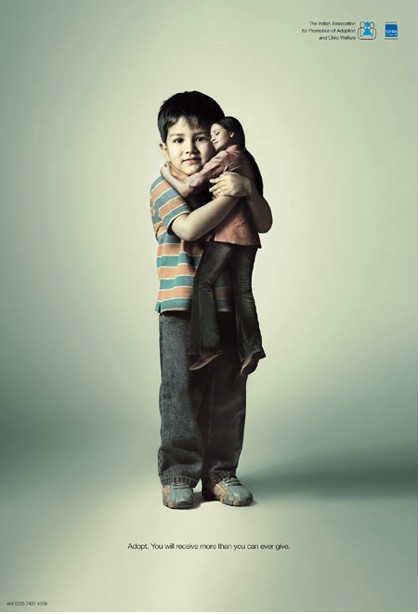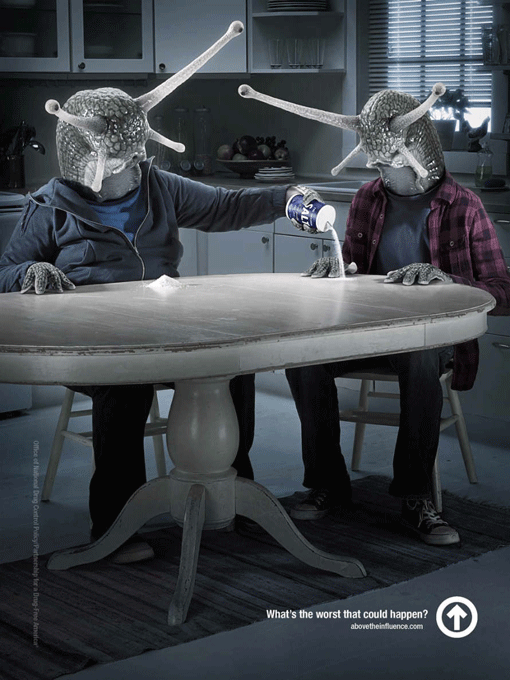Persuasion Words 2 Know

Welcome to your Persuasion Quiz! Do your best to answer all 20 questions with the best answers possible. Good luck! This quiz is worth 20 points!
- 1.
The ART of convincing others of your opinion
- A.
Opinion
- B.
Persuasion
- C.
Stereotype
- D.
Bias
Correct Answer
B. PersuasionExplanation
Persuasion refers to the act of influencing or convincing others to adopt a certain opinion or belief. It involves presenting arguments, evidence, or emotional appeals to sway someone's thinking or behavior. In the context of the given question, the "ART of convincing others of your opinion" suggests that persuasion is a skill or technique that can be honed and mastered. It implies that effectively persuading others requires a strategic approach, involving the use of persuasive language, logical reasoning, and understanding the audience's perspective.Rate this question:
-
- 2.
Your personal IDEA about something
- A.
Fact
- B.
Stereotype
- C.
Opinion
- D.
Bias
Correct Answer
C. OpinionExplanation
The given options include "fact," "stereotype," "opinion," and "bias." Among these options, "opinion" is the correct answer. An opinion refers to an individual's personal belief or perspective on a particular matter. It is subjective and may not be based on factual evidence or objective reasoning. In contrast, a fact is a verifiable truth, a stereotype is a generalized belief about a group, and bias refers to favoring or prejudice towards a particular viewpoint. Therefore, "opinion" best fits the given options.Rate this question:
-
- 3.
Your personal ATTITUDE about something, positive or negative
- A.
Opinion
- B.
Fact
- C.
Stereotype
- D.
Bias
Correct Answer
D. BiasExplanation
Bias refers to a personal attitude towards something, which can be positive or negative. It is a subjective viewpoint that influences one's opinions and judgments. Bias is often based on preconceived notions or beliefs and can lead to unfair treatment or discrimination. It is important to be aware of our biases and strive for objectivity when forming opinions or making decisions.Rate this question:
-
- 4.
A genre of text written with the author's purpose of PERSUADING
- A.
Editorial
- B.
Fiction
- C.
Nonfiction
- D.
Autobiography
Correct Answer
A. EditorialExplanation
Editorials are a genre of text written with the author's purpose of persuading. They are typically found in newspapers or magazines and express the opinion of the author on a particular issue. Editorials use persuasive language and arguments to convince readers to adopt a certain point of view or take a specific action. Unlike fiction, nonfiction, or autobiography, editorials are specifically focused on influencing the reader's opinion rather than telling a story or providing factual information.Rate this question:
-
- 5.
A statement of TRUTH
- A.
Fact
- B.
Opinion
Correct Answer
A. FactExplanation
The given correct answer is "fact." A fact is a statement that can be proven or verified to be true. It is based on evidence, data, or objective information. Unlike an opinion, which is a personal belief or judgment, a fact is universally accepted and does not vary from person to person. Therefore, the statement of TRUTH mentioned in the question is considered a fact.Rate this question:
-
- 6.
A JUDGMENT of a whole group based on the actions of a few
- A.
Bias
- B.
Stereotype
- C.
Opinion
- D.
Persuasion
Correct Answer
B. StereotypeExplanation
Stereotype is the correct answer because it refers to the act of forming a fixed and oversimplified idea or image of a particular group or individual based on limited information or the actions of a few members. This judgment is often unfair and does not take into account the individuality and diversity within the group. Stereotypes can lead to prejudice and discrimination.Rate this question:
-
- 7.
The persuasion technique that uses POPULARITY to sell
- A.
Repetition
- B.
Bandwagon
- C.
Red herring
- D.
Name calling
Correct Answer
B. BandwagonExplanation
Bandwagon is the correct answer because it refers to a persuasion technique that relies on the popularity or trendiness of a product or idea to convince others to join in or support it. This technique suggests that since everyone else is doing it or believes in it, you should too. By emphasizing the large number of people who have already adopted the product or idea, it creates a sense of social pressure and the fear of missing out, making it more likely for others to conform and follow the crowd.Rate this question:
-
- 8.
The persuasion technique that uses DISTRACTION to sell
- A.
Repetition
- B.
Bandwagon
- C.
Red herring
- D.
Name calling
Correct Answer
C. Red herringExplanation
A red herring is a persuasion technique that uses distraction to sell. It involves diverting the attention of the audience by introducing irrelevant information or arguments that are not directly related to the topic at hand. This technique aims to confuse or mislead the audience and steer them away from the main point or issue being discussed. By introducing a red herring, the persuader hopes to shift the focus and influence the audience's perception or decision-making process.Rate this question:
-
- 9.
The persuasion technique that uses FACTS and DATA to sell
- A.
Numbers and statistics
- B.
Red herring
- C.
Bandwagon
- D.
Emotional appeal
Correct Answer
A. Numbers and statisticsExplanation
Numbers and statistics are a persuasion technique that uses factual information and data to sell a product or idea. This technique relies on presenting quantitative evidence to support the argument and convince the audience. By providing concrete numbers and statistics, the speaker aims to build credibility and demonstrate the validity of their claims. This approach appeals to the logical and rational side of the audience, as it is based on objective information rather than emotional appeals or logical fallacies like red herrings or bandwagon.Rate this question:
-
- 10.
The persuasion technique that uses strong FEELING words and pictures to sell
- A.
Bandwagon
- B.
Testimonial
- C.
Red herring
- D.
Emotional appeal
Correct Answer
D. Emotional appealExplanation
The persuasion technique that uses strong feeling words and pictures to sell is known as emotional appeal. This technique aims to evoke strong emotions in the audience, such as happiness, fear, or excitement, to persuade them to buy a product or support a particular cause. By using emotionally charged language and compelling visuals, advertisers can create a connection with the audience and influence their decision-making process. Emotional appeal is a powerful technique commonly used in advertising and marketing campaigns.Rate this question:
-
- 11.
The persuasion technique that uses a FAMOUS PERSON or EXPERT to sell
- A.
Emotional appeal
- B.
Testimonial
- C.
Bandwagon
- D.
Repetition
Correct Answer
B. TestimonialExplanation
A testimonial is a persuasion technique that uses a famous person or expert to sell a product or service. This technique relies on the credibility and influence of the individual endorsing the product, as people are more likely to trust and be influenced by someone they admire or perceive as an authority. Testimonials provide social proof and create a sense of trust and reliability, making potential customers more inclined to make a purchase.Rate this question:
-
- 12.
The persuasion technique that uses the REPEATING of words, logos, slogans or images to sell
- A.
Bandwagon
- B.
Red herring
- C.
Repetition
- D.
Testimonial
Correct Answer
C. RepetitionExplanation
Repetition is the correct answer because it refers to the persuasion technique of using the repeating of words, logos, slogans, or images to sell a product or idea. This technique aims to reinforce a message by repeating it multiple times, making it more memorable and persuasive to the audience. By repeatedly presenting the same information, it creates familiarity and can influence people's perception and decision-making process.Rate this question:
-
- 13.
Which persuasive technique is being used in this advertisement?
- A.
Bandwagon
- B.
Red herring
- C.
Testimonial
- D.
Numbers and statistics
Correct Answer
C. TestimonialExplanation
The persuasive technique being used in this advertisement is testimonial. Testimonial is a technique where a famous or influential person endorses or recommends a product or service. In this advertisement, it is likely that a well-known person is giving a positive testimonial about the product, which is intended to persuade the audience to trust and purchase the product based on the endorsement.Rate this question:
-
- 14.
Which persuasive technique is being used in this advertisement?
- A.
Bandwagon
- B.
Name calling
- C.
Testimonial
- D.
Emotional appeal
Correct Answer
D. Emotional appealExplanation
This advertisement is using emotional appeal as a persuasive technique. It aims to evoke emotions in the audience, such as happiness, sadness, fear, or excitement, in order to influence their decision-making process. By appealing to emotions, the advertisement seeks to create a connection with the audience and make them more likely to respond positively to the message or take the desired action.Rate this question:
-
- 15.
What is the "salt" a symbol for in this adbuster?
- A.
Alcohol
- B.
Unhealthy food
- C.
Drugs
- D.
Smoking
Correct Answer
C. DrugsExplanation
The use of the word "salt" as a symbol in this adbuster suggests that it represents drugs. Salt is often used as a metaphor for drugs due to its addictive nature and the way it can enhance the taste of food. This association implies that drugs can have a similar addictive quality and can provide a temporary sense of pleasure or enhancement.Rate this question:
-
- 16.
What is the message, or theme, of this adbuster?
- A.
McDonald's is "good enough to DIE for"!!
- B.
McDonald's food doesn't affect your health.
- C.
McDonald's food can cause serious health problems.
- D.
None of the above.
Correct Answer
C. McDonald's food can cause serious health problems.Explanation
The message or theme of this adbuster is that McDonald's food can cause serious health problems. This is implied by the statement "McDonald's is 'good enough to DIE for'!!" which suggests that the food is so unhealthy that it can lead to death.Rate this question:
-
- 17.
How can having negative stereotypes affect others around us?
- A.
It doesn't affect them.
- B.
It only affects them when I DO something mean.
- C.
It affects them totally because it changes how I treat them.
Correct Answer
C. It affects them totally because it changes how I treat them.Explanation
Having negative stereotypes can affect others around us because it changes how we treat them. When we have negative stereotypes, we may treat others unfairly or with prejudice based on those stereotypes. This can lead to discrimination, exclusion, or mistreatment, which can have a negative impact on the well-being and self-esteem of the individuals affected. It can also create a hostile or unwelcoming environment, making it difficult for them to thrive or feel accepted. Therefore, negative stereotypes can have a significant influence on how we interact with and treat others.Rate this question:
-
- 18.
This is an example of a:
- A.
Logo
- B.
Slogan
Correct Answer
A. LogoExplanation
This question is asking for the category or type of the given example. The correct answer is "logo" because a logo is a symbol or design that represents a company or brand. It is used to identify and distinguish the brand from others. A logo is typically visually appealing and helps in creating brand recognition and recall.Rate this question:
-
- 19.
This is an example of a:
- A.
Logo
- B.
Slogan
Correct Answer
B. SloganExplanation
This is an example of a slogan. A slogan is a short and catchy phrase used in advertising or branding to convey a memorable message or idea about a product, company, or cause. It is typically used to create brand recognition and differentiate a product or company from its competitors. In this case, the given options suggest that the provided example is a slogan rather than a logo, as logos are visual representations or symbols used to identify a brand or organization.Rate this question:
-
- 20.
How was the Career Builder Superbowl commercial an example of emotional appeal?
- A.
It repeated the same message over and over again.
- B.
It showed how different people felt about jobs they hated.
- C.
It encouraged people to use their service because it is popular.
- D.
It distracted people from their jobs.
Correct Answer
B. It showed how different people felt about jobs they hated.Explanation
The Career Builder Superbowl commercial was an example of emotional appeal because it showed how different people felt about jobs they hated. By showcasing the negative emotions and frustrations associated with these jobs, the commercial aimed to evoke empathy and resonate with viewers on an emotional level. This emotional connection can be a powerful motivator for individuals to consider using Career Builder's services to find a better job.Rate this question:
-
Quiz Review Timeline +
Our quizzes are rigorously reviewed, monitored and continuously updated by our expert board to maintain accuracy, relevance, and timeliness.
-
Current Version
-
Mar 21, 2023Quiz Edited by
ProProfs Editorial Team -
Dec 17, 2009Quiz Created by
Jlmartin
- Accounting Quizzes
- Advertising Quizzes
- Agriculture Quizzes
- Automotive Quizzes
- Brand Quizzes
- Business Accounting Quizzes
- Business Analyst Quizzes
- Business Development Quizzes
- Business Environment Quizzes
- Business Etiquette Quizzes
- Business Finance Quizzes
- Business Math Quizzes
- Business Organization Quizzes
- Business Plan Quizzes
- Business Process Quizzes
- Business Study Quizzes
- Business Technology Quizzes
- CEO Quizzes
- Collaboration Quizzes
- Company Quizzes
- Construction Quizzes
- Consumer Quizzes
- CSR Quizzes
- Customer Quizzes
- Customer Service Quizzes
- Development Quizzes
- Ecommerce Quizzes
- Employment Quizzes
- Entrepreneurship Quizzes
- Finance Quizzes
- Hospitality Quizzes
- Human Resources Quizzes
- Industry Quizzes
- International Business Quizzes
- Introduction To Business Quizzes
- Investment Quizzes
- Logistics Quizzes
- Management Quizzes
- Manufacturing Quizzes
- Marketing Quizzes
- Material Quizzes
- Media Quizzes
- Office Quizzes
- Organization Quizzes
- Principles Of Business Quizzes
- Printing Quizzes
- Product Quizzes
- Publishing Quizzes
- Real Estate Quizzes
- Retail Quizzes
- Sales Quizzes
- SAP Business One Quizzes
- Small Business Quizzes
- Source Quizzes
- Supply Quizzes
- Survey Quizzes
- Telecommunication Quizzes
- Trade Quizzes
- Training Quizzes
- Transportation Quizzes
- Warehouse Quizzes
- Welding Quizzes
 Back to top
Back to top







